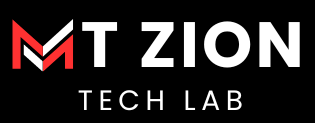In today’s fast-paced business environment, effective project management is essential for achieving success. With countless project management tools available, selecting the right one can be overwhelming. The right tool can streamline workflows, enhance team collaboration, and ultimately drive project success. In this guide, we’ll explore key factors to consider when choosing a project management tool and provide recommendations for popular options.
Understanding Your Project Management Needs
Before diving into the world of project management tools, it’s crucial to understand your specific needs. Consider the following questions:
- Project Size and Complexity: Are you managing small, simple projects or large, complex initiatives?
- Team Size and Location: How many team members are involved, and are they located in the same office or distributed across different locations?
- Project Methodology: Do you follow Agile, Waterfall, or a hybrid methodology?
- Required Features: What specific features are essential for your team, such as task management, time tracking, resource allocation, or reporting?
- Budget: What is your budget for a project management tool?
Essential Features to Look for
A good project management tool should offer a range of features to support your team’s needs. Here are some essential features to consider:
- Task Management: The ability to create, assign, track, and prioritize tasks is fundamental.
- Collaboration Features: Effective communication and collaboration tools, such as real-time chat, file sharing, and document version control, are essential for team productivity.
- Time Tracking: Accurate time tracking helps monitor project progress and resource allocation.
- Resource Management: The ability to manage resources, including personnel, equipment, and budget, is crucial for project success.
- Reporting and Analytics: Comprehensive reporting and analytics tools provide insights into project performance and identify areas for improvement.
- Integration Capabilities: The tool should integrate seamlessly with other tools your team uses, such as email, calendar, or CRM software.
Popular Project Management Tools
Numerous project management tools are available, each with its unique strengths and weaknesses. Here are some popular options to consider:
- Asana: A versatile tool that offers robust task management, collaboration features, and integration capabilities.
- Trello: A visual project management tool that uses boards, lists, and cards to organize tasks.
- Basecamp: A comprehensive tool that includes project management, communication, and collaboration features.
- Monday.com: A customizable platform that allows you to create workflows and dashboards tailored to your specific needs.
- Jira: Primarily used for software development, Jira offers advanced features for agile project management.
- Microsoft Project: A traditional project management tool with a focus on Gantt charts and resource allocation.
Factors to Consider When Choosing a Tool
Beyond features, several other factors should be considered when selecting a project management tool:
- Ease of Use: The tool should be intuitive and easy to learn for your team.
- Customer Support: Look for a tool with reliable customer support to assist you with any questions or issues.
- Scalability: Consider whether the tool can accommodate your team’s growth and changing needs.
- Cost: Evaluate the pricing plans and determine if the tool fits within your budget.
- Free Trial or Demo: Take advantage of free trials or demos to test the tool and ensure it meets your requirements.
Implementing and Maximizing Your Tool
Once you’ve selected a project management tool, it’s important to implement it effectively and maximize its benefits. Here are some tips:
- Provide Training: Ensure your team receives adequate training on how to use the tool effectively.
- Encourage Adoption: Foster a culture of using the tool consistently and promoting its benefits.
- Customize Settings: Tailor the tool to your team’s specific workflows and preferences.
- Regularly Review and Adjust: Continuously evaluate the tool’s performance and make adjustments as needed.
Conclusion
Choosing the right project management tool can significantly improve your team’s efficiency and productivity. By carefully considering your needs, evaluating available options, and implementing the tool effectively, you can streamline workflows, enhance collaboration, and achieve project success.

